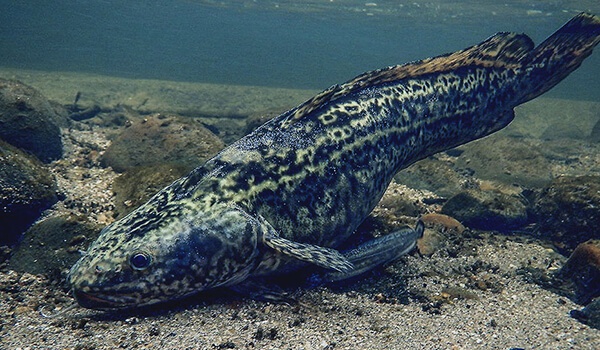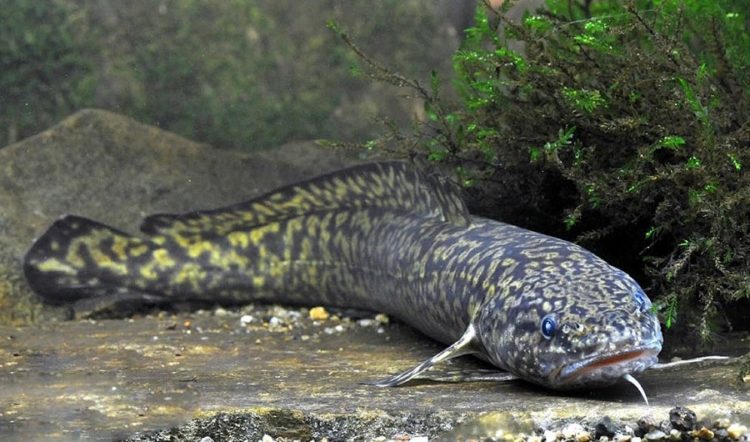Contents
Burbot is a unique representative of the cod-like order of the cod family, which has a significant commercial value. The uniqueness of the fish lies in the fact that the burbot is the only one from its squad (Gadiformes) that has received a habitat exclusively in fresh water. Only occasionally and for a short time, burbot can be found in desalinated areas of the sea, where salinity does not exceed 12%.
According to the world classification, burbot is unique not only because it is the only representative of freshwater in its order, but also is the only burbot in the genus. In fish, according to the same classification, there are 3 distinguished subspecies:
- Lotta lotta;
- Lota lota leptura;
- Lota lota maculousa.
The first subspecies received a habitat in the fresh waters of Asia and Europe and is called the common burbot. The second subspecies under the name is the thin-tailed burbot, whose habitats are in the cold waters of the northern river of Canada – the Mackenzie, the rivers of Siberia, the Arctic waters washing the shores of Alaska. The third subspecies has a large population only in the waters of North America.
Features of the species and its description
Appearance

Photo: www.wildfauna.ru
The average individual has a body length of not more than 1 m, while its mass reaches 25 kg. When asked how much the largest specimen caught weighed, many online publications answer that it was a fish weighing 31 kg with a body length of 1,2 m, a photograph confirming this fact has not been preserved.
Many anglers claim that burbot is very similar to catfish, but this is only at first glance, since the differences are significant. The similarity is manifested only by a rounded and elongated, laterally compressed body shape, which is really identical with the catfish. Small scales covering the entire body of the fish in combination with mucus protect it from the caudal fin to the gill covers, eliminating damage and hypothermia.
The flattened head with an elongated upper jaw makes it similar in shape to the pelengas. A single whisker is located on the chin of the fish, and a pair of other whiskers is located on both sides of the upper jaw.
Depending on the habitat, namely the color of the bottom of the reservoir, the color of the body varies from olive to black, with numerous spots and stripes. The color of the young is always dark, almost black, which allows the fry to avoid premature death from the teeth of a river predator. Burbot lives on average up to 15 years, but some specimens live up to 24 years. The species is characterized by a very large difference in weight, head and body sizes in females and males, females are always much larger, with a more massive body, but its less dark color.
Habitat
Cold and clear water, as well as the presence of a rocky bottom, are the main factors that indicate the presence of fish. When searching for trophy burbot, they try to find a section of the river with a deep hole, it is in it that the desired trophy will be located, less often it can be locations with coastal vegetation, flooded snags.
At the end of spring and with the beginning of the summer period, for me – this is another name for it, a sedentary life starts, which forces the fish to settle among stone placers at maximum depth or in a coastal hole, and only at nightfall does it go hunting for ruff.
With the onset of a hot period, the lesser is very constrained, he can hardly endure the increase in water temperature, tries to hide in cool places or even burrow into the bottom silt.

Photo: www. interesnyefakty.org
Diet
The basis of the diet of burbot includes minnows, perch, roach, small ruff and crucian carp, as well as a favorite delicacy: long-clawed crayfish, frog, insect larvae, tadpoles.
Depending on the time of the year, and, accordingly, the temperature regime of the water, my food preferences undergo changes. In the spring-summer period, our predator, regardless of age, hunts for bottom dwellers, represented mainly by crustaceans and worms. With the onset of autumn cooling, up to winter frosts, my appetite increases, which means that the size of prey in the form of fish grows, the size of which reaches a third of its own length.
Spawning
The period of puberty in males occurs earlier than in females, in most cases it occurs upon reaching the age of 4 years and the weight of the individual is not less than 0,5 kg.
At the turn of the autumn-winter seasons, from the moment ice forms on the surface of water bodies, the fish begin a long migration to the spawning site. The spawning ground chosen by me is characterized by the presence of stone placers at the bottom. For sedentary lacustrine species of burbot, leaving the lake for spawning is unacceptable; it prefers to move to a shallower area with the presence of stone placers for spawning.
Spawning lasts about 3 months from December to February, the timing of spawning depends on the temperature regime typical for the region where the fish lives. The most favorable water temperature for spawning 1-40C, in the event of a thaw, the spawning period is delayed, and with consistently high frosts, spawning is most active.
A fat drop enveloping an egg with a diameter of up to 1 mm, carried away by the current, falling on a rocky bottom, falls between stone fragments and is incubated there for a period of one to 2,5 months. The timing of the incubation period, as well as the duration of spawning, depend on the temperature regime. The female, during only one spawning, is able to sweep away more than 1 million eggs.
At the end of the incubation period, which coincides in time with the beginning of the flood, burbot fry appear from the bottom layer. These circumstances are negatively reflected in the survival rate of fry, since most of them enter the floodplain waters, and with the end of the flood they die as the floodplain level declines.
Distribution
Western Europe
The circumpolar ring of the burbot habitat has received a latitude at which rivers have mouths in the Arctic Ocean.
The once common fish in the waters surrounding the British Isles, rivers and lakes in Belgium, Germany was exterminated back in the 70s due to thoughtless industrial fishing. Nowadays, a program has been developed to restore the burbot population in the above areas.

Photo: www.megarybak.ru
In fresh waters in the Netherlands, burbot is no exception, here it is also endangered. Formerly numerous flocks of fish that lived in rivers and lakes:
- Bisbohse;
- Volkerake;
- Krammare;
- IJsselmeer;
- Ketelmer,
have lost their former population size and are subject to reintroduction. In the water bodies of Italy, France, Austria, Switzerland, more favorable conditions have developed for the conservation of the species, the population is especially stable in the rivers and lakes of Switzerland.
Northern Europe
Although previously the burbot population was numerous in the rivers and lakes of Lithuania, Estonia, Latvia, Sweden, Finland and Norway, in the 90s it began to sharply reduce its numbers. In the reports of environmental activists, there are depressing figures on the decline in the number of burbot populations, a pronounced decrease in the number in the rivers and lakes of Finland and Sweden.
Scientists associate this state of affairs with eutrophication (deterioration of water quality), as well as with an increase in uncharacteristic (alien) fish species, due to which burbot is being replaced as a native species of these waters. The main enemies of the family include:
- Perch;
- Ersh;
- Roach;
- Gudgeon.
Although the listed species of fish cannot harm large individuals of burbot, they successfully eat caviar and growing offspring.
Eastern Europe
For Slovenia, the main rivers and lakes where the most numerous populations of burbot are located are:
- Drava River;
- Lake Cerknica.
In the Czech Republic, this type of fish can still be found in rivers:
- Ohře;
- Morava.
Due to the regulation of the rivers of Eastern Europe, the decrease in the quality of water in them, burbot has become a rare guest in the by-catch of fishermen. So in Bulgaria, Hungary and Poland, this species was recognized as rare and endangered, and the Slovenian authorities went even further, in order to preserve the species, and decided to ban its catch.

Photo: www.fishermanblog.ru
Russian Federation
On the territory of our country, this species has become widespread in the network of rivers and lakes belonging to the basins of the following seas:
- Black;
- Caspian;
- White;
- Baltic.
The temperate and arctic zones have created all the conditions for a comfortable increase in the population in the Siberian river basins:
- Ob;
- Anadyr;
- Meadow;
- Hatanga;
- Yalu;
- Oz. Zaisan;
- Oz. Teletskoye;
- Oz. Baikal.









